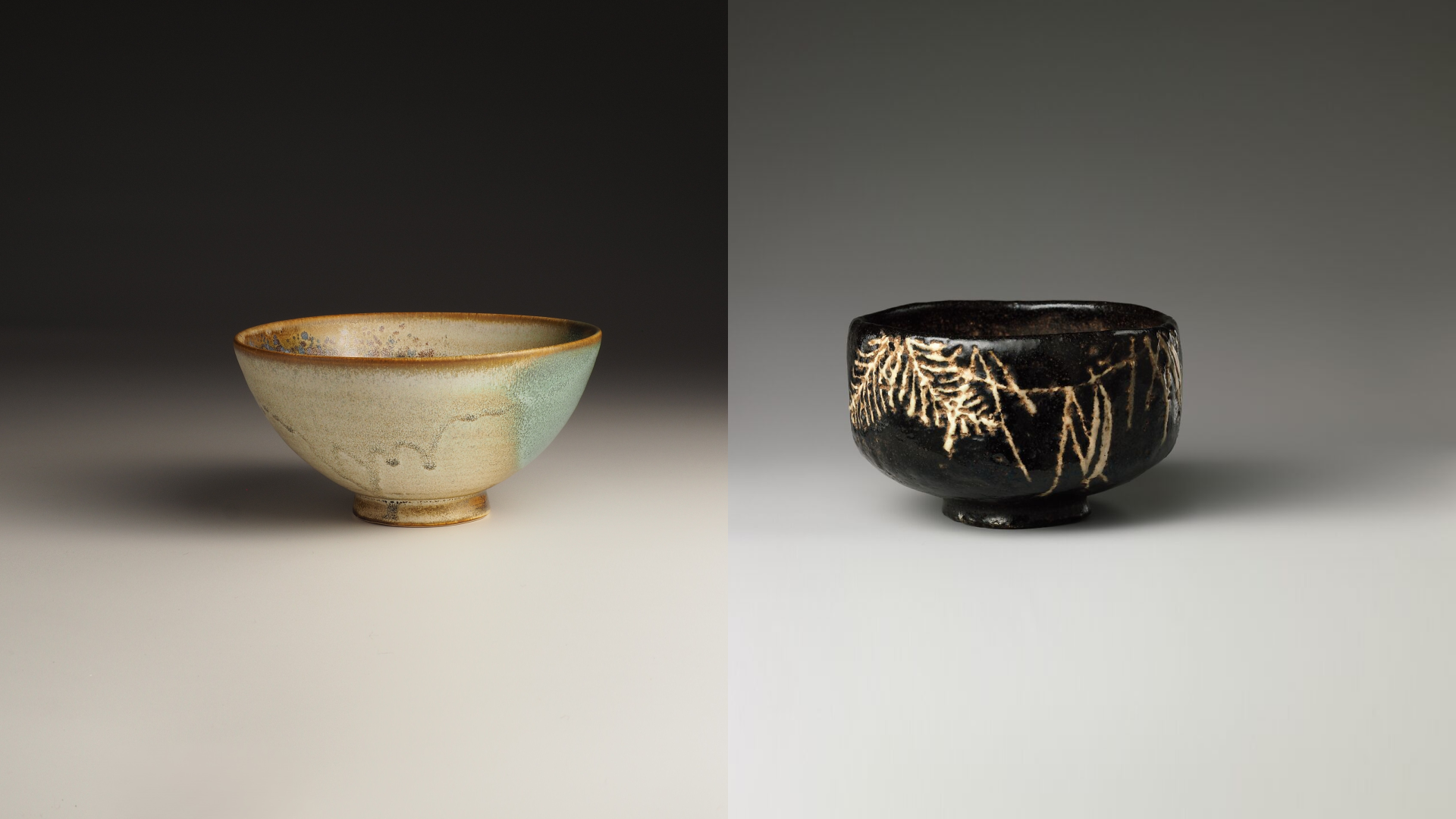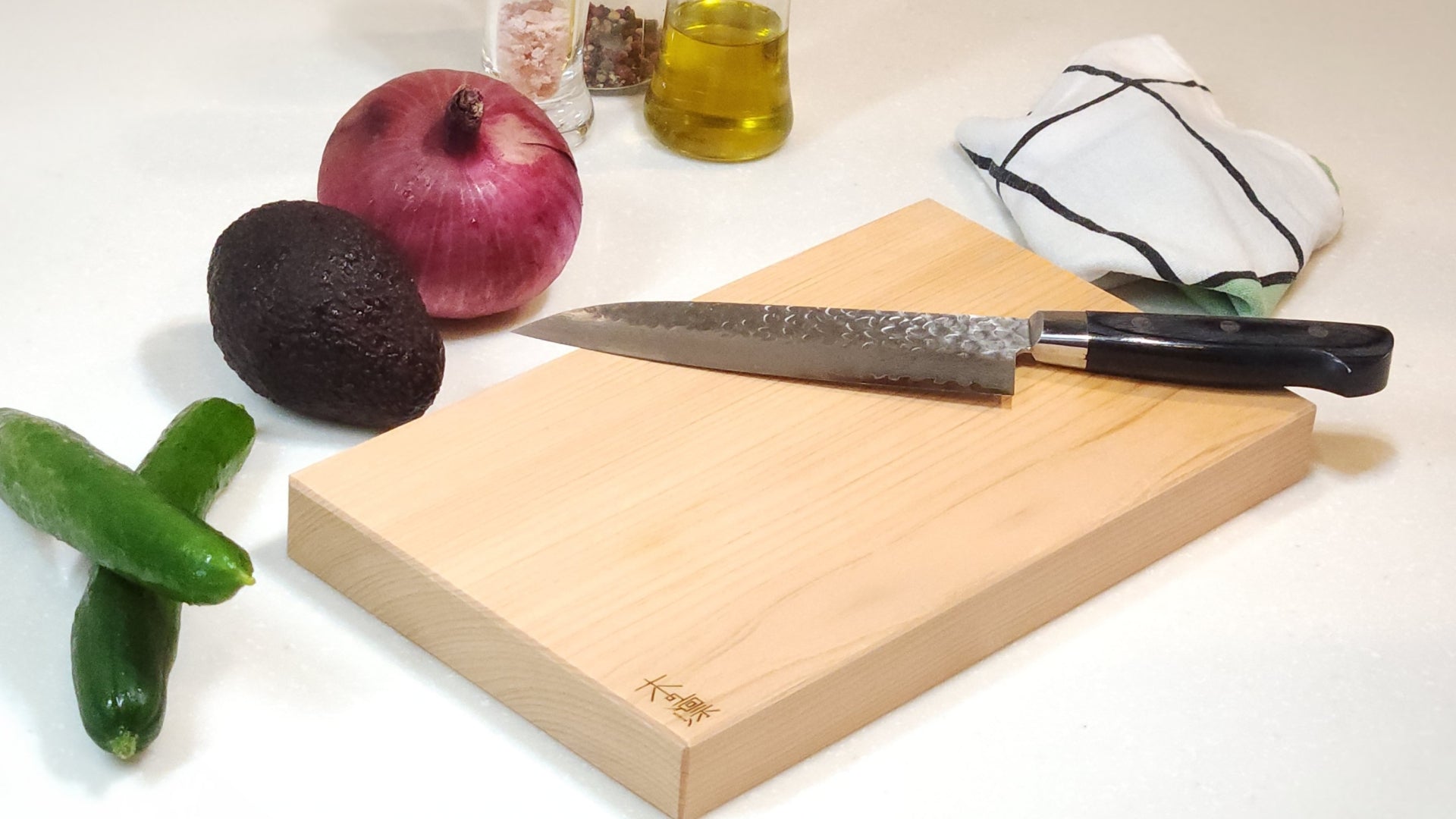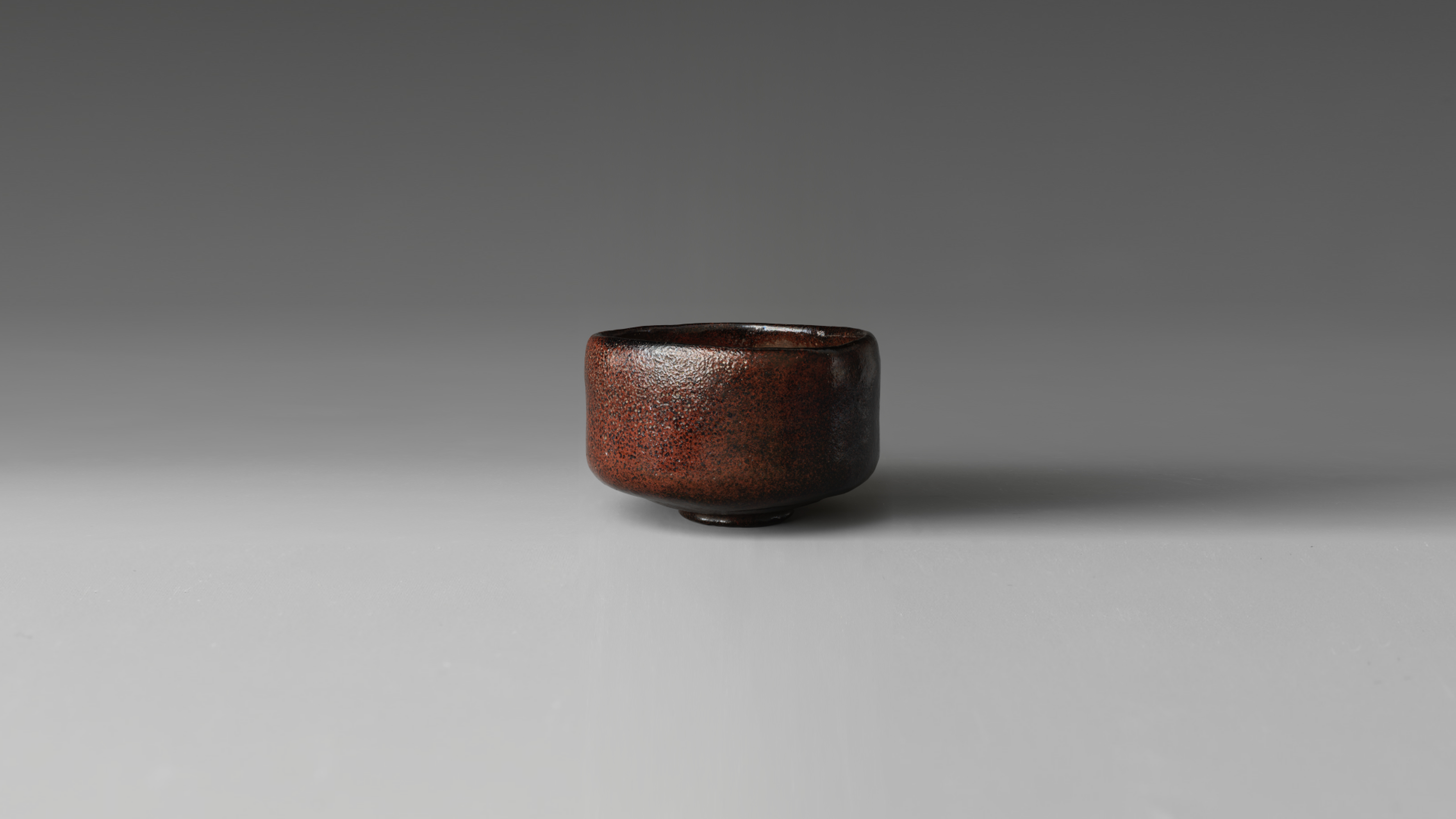
Chawan: Meaning and Types of Japanese Tea and Rice Bowls
The chawan is more than just a bowl. It carries centuries of tradition, shaping both the way Japanese families share meals and the rituals of the tea ceremony.
In this article, we will dive deeper into this remarkable object , briefing analyzing its origins, exploring the different types of chawan, and discover how each plays a unique role in Japanese culture.
What Is a Chawan?
A chawan (茶碗 - lit. tea bowl) is a Japanese bowl with two main uses. In daily life, it often means the small rice bowl used at every meal. In the tea ceremony, it refers to the larger vessel made for whisking and drinking matcha (抹茶).
This dual meaning reflects the cultural weight of the chawan, uniting Japan’s two essentials: tea and rice, at the heart of Japanese culture.
So, when people ask the question “What is a chawan?”, the answer really depends on the context.
Both are called chawan because historically, the bowl was associated with holding tea, and only later became a word for rice bowls as well.
What Makes a Tea Bowl a Chawan?
For tea enthusiasts, the word chawan instantly evokes images of handcrafted pottery bowls like Raku or Hagi, used to serve vibrant green matcha.
In general, to be considered a chawan tea bowl, and more precisely a matchawan (抹茶碗 / Matcha Jawan 抹茶茶碗), the bowl must follow certain conventions of shape, size, and purpose:
A matchawan is generally broader and deeper than a standard rice bowl.
This design allows sufficient space for whisking matcha effectively, ensuring a smooth and consistent froth. In addition, its thicker walls help maintain the tea’s warmth while remaining comfortable to hold with both hands.

Matchawan from Nunobiki Kiln, Shiga prefecture.
What Is a Rice Chawan?
For most Japanese households, though, the chawan is a familiar rice bowl, personal and practical.
Also called gohan chawan (ご飯茶碗 - lit. rice tea bowl) or meshiwan (飯茶碗 - lit. meal tea bowl) this bowl is smaller, lighter, and shaped to be held in one hand while eating with chopsticks.
Its shape usually has a conical silhouette that flares gently outward from a narrow foot.
Beyond its shape, this type of chawan also carries a sense of individuality.
In Japan, each family member usually has their own rice bowl, chosen according to size, color, or design that reflects personal taste.
Let’s remember that because rice is the heart of most meals, the rice bowl represents not just a mere vessel but an intimate, everyday companion.
History of the Japanese Chawan Tea Bowl
Over the centuries, the meaning of chawan has shifted. What began as a vessel for preparing and enjoying tea gradually expanded into everyday dining.
Let’s look at the key moments that shaped this transformation.
From Tea Bowl to Rice Bowl
The history of the Japanese chawan is deeply connected to China’s ceramic heritage.
Its story begins in Fújiàn (福建), a Chinese province just opposite to the island of Taiwan where a style of black-glazed tea bowl was produced near what is today the town of Shuǐjí (水吉) and reached its peak in popularity during the Song Dynasty (宋代, Sòng Dài, 960-1279).
From Jianzhan to Tenmoku
Known in China as Jiànzhǎn (建盏 - lit. Fujian small cups) this style of ceramic became prized across the country, especially in tea culture, and its lustrous glazes and sturdy forms soon gained a reputation as one of the finest ceramics of their time.
Here is where things become interesting.
Japanese monks visiting China at the time encountered these bowls, especially when visiting Mount Tianmu (天目山, Tiānmù Shān), an important centre of Zen Buddhism, and when they brought them back to Japan, people asked about their name. The monks simply replied: "Tenmoku" naming them after the mountain.
From then on, the word Tenmoku (the Chinese characters 天目 are pronounced tenmoku in Japanese) came to mean this style of black tea bowl.
Archaeological research supports this theory, showing that in the ceramic world, the name “tenmoku” itself is of Japanese origin, rooted in the monks’ experiences in China.
After Jiànzhǎn bowls were introduced to Japan, Japanese potters developed their own black-glazed bowls, which came to be considered part of the Tiānmù (天目, Tenmoku) tradition within Japanese ceramics.

Jiànzhǎn (Jian Ware) Tenmoku Tea Bowl, Song dynasty (960–1279 AD). The Met Museum
Local Evolution of Chawan
As tea culture evolved in Japan, these bowls shifted from imported Chinese forms to locally made styles such as Raku, Hagi, and came to be simply known as chawan (茶碗, tea bowl).
Over time this term started to be used to refer to any matcha bowl used in tea ceremony, a centerpiece of Japanese aesthetics and hospitality.
By the late 19th century, with ceramics becoming widely available, chawan also came to describe the everyday rice bowl, the little vessel that sits at the heart of Japanese every meal.
In this way, the chawan reflects a journey of transformation: from Chinese Jianzhan masterpieces to Japanese Tenmoku bowls, and finally to the humble rice bowl that remains a daily companion in modern homes.
Why the Chawan Matters in Japanese Tradition
In Japanese tradition, the matcha bowl holds more than tea, it holds a philosophy.
During the tea ceremony (chanoyu 茶の湯), the bowl is not just a tool but a centerpiece of the entire ritual.
Guests admire its shape, glaze, and intended flaws, appreciating how it embodies the spirit of wabi-sabi, the beauty found in simplicity and imperfection.
Over centuries, tea masters placed the chawan at the heart of their practice. The bowl is cradled in both hands, inviting a sense of respect and mindfulness.
Famous pottery traditions in Japan built their reputation on crafting these bowls, and while each type carries its own vibe or regional character, they all serve the same purpose: to create harmony between the tea, the host, and the guest.
Even outside the tea room, the chawan reminds people of these values.
At home, lifting a rice bowl to eat is an everyday gesture of respect for food.
In both settings, the chawan continues to be more than a container, it is a symbol of hospitality, tradition, and the Japanese way of finding beauty in daily rituals.
Matcha Green Tea Bowl vs. Rice Chawan Bowl
As we briefly analyzed earlier, the chawan plays an essential role in Japanese culture, yet its meaning changes depending on the context.
Both the matcha bowl and the rice bowl share the same name, but their purposes, shapes, and aesthetics differ greatly.
Let’s look at some simple differences:
Shape and Size Differences Between Matcha Tea Bowls and Rice Bowls
Matcha bowl
A matcha bowl typically larger and deeper in comparison to a rice bowl and it is designed to allow the whisking of powdered tea with hot water.
Its generous size gives the chasen (茶筅, bamboo whisk) enough room to move freely in circular or rapid motions, preventing spills and ensuring the tea blends evenly.
The depth helps maintain the right balance between water and matcha powder, while also keeping the warmth of the tea longer.
Unlike smaller bowls, the wider proportions of a chawan tea bowl are intentional: they create space not just for practicality, but also for the graceful, deliberate movements of the tea ceremony (茶道- Sado).The open rim further makes it easier to observe the foam as it forms, highlighting the visual beauty of matcha’s vibrant green surface.
To honor this harmony, selecting a well-matched matcha bowl and whisk is also very important.
Rice Bowl Chawan
By contrast, when used in dining, the chawan is noticeably smaller in size, designed to hold a single serving of rice rather than a large volume of liquid.
This compact dimension allows it to rest securely in one hand throughout the meal without feeling heavy.
The smaller capacity also reflects the cultural practice of serving rice in modest portions, complementing other dishes in a balanced meal.
Matcha Bowl and Rice Bowl Comparison Chart |
||||
| Type | Japanese name | Use | Size | Material |
Matcha Bowl |
Matchawan (抹茶碗) Matcha Jawan (抹茶茶碗) |
Tea ceremony | Large and deep to allow whisking. | Pottery (traditional) Porcelain (modern) Wood (warm and natural) |
Rice Bowl |
Gohan Chawan (ご飯茶碗 - lit. Rice Tea Bowl) Meshi Chawan (飯茶碗 - lit. Meal Tea bowl) |
Dining | Small. Designed to comfortably fit in one’s hand. | Pottery (rustic feel) Porcelain (daily use) |
Ceramic Materials and Glazing
The materials and finish of each chawan reflect their function:
- A matcha tea bowl often uses thick pottery walls to retain heat and highlight rustic textures or refined glazes, embodying the wabi-sabi spirit of imperfection and beauty.
- On the other hand, a Japanese rice bowl is usually lighter, with thinner ceramic walls and smooth interiors, making it easy to wash and suitable for daily meals.
The glazing tends to be simple, emphasizing ease of use rather than ceremonial depth.
The Wooden Bowl as a Unique Choice
While most chawan are made from ceramic, some Japanese artisans also craft them from wood.
Wooden bowls feel warmer to the touch and resist accidental breakage, making them practical for daily use. Unlike ceramic, wood does not retain heat as strongly, influencing how temperature is experienced not only with matcha but with other foods and drinks, offering a different yet refined way to enjoy the moment.
If you’d like to experience this craftsmanship yourself, explore our Matcha Bowl made from Hinoki wood.

Matcha Bowl made from hinoki wood (Japanese cypress).
Types of Matcha Chawan Tea Bowls in the Tea Ceremony
In the world of tea wares, there is a well-known Japanese saying: “Raku first, Hagi second, and Karatsu third.” This expression conveys the traditional ranking of vessels most valued in the tea ceremony.
Let us take a brief look at the distinctive qualities of each, followed by several notable honorable mentions.
Raku Chawan Tea Bowl
The Raku chawan is one of the most iconic tea bowls in the Japanese tea ceremony. Known for its hand-molded form rather than being shaped on a wheel, it fully embodies wabi-sabi, the philosophy of appreciating imperfection and simplicity, typical of Raku ware (楽焼, raku-yaki).
The soft texture, porous clay, and natural glaze variations make each bowl unique, creating a deeply personal connection between the tea practitioner and the vessel.
Hagi Chawan Tea Bowl
Hagi ware (萩焼, Hagi-yaki) originates from Yamaguchi Prefecture and is admired for its warm, soft clay body and subtle glazes.
Another feature of Hagi ware is the fine crackle pattern called kannyu (貫入), which absorbs tea over time, gradually changing the bowl’s color. This aging process is cherished, as it reflects the philosophy of change and impermanence central to the tea ceremony.
Karatsu Chawan Tea Bowl
Karatsu ware (唐津焼, Karatsu-yaki), from Saga Prefecture in Kyushu, has been a favorite since the Azuchi-Momoyama period (1568–1600).
Karatsu chawan are admired for their earthy tones, simple brushwork, and natural ash glazes. Their understated designs balance rustic charm with quiet elegance, making them highly versatile for tea gatherings.
Many tea masters have praised Karatsu bowls for their harmony between function and artistry.
Shino, Shigaraki, and Oribe Chawan Tea Bowls
- Shino ware (志野焼, Shino-yaki) bowls, first produced in Mino, are recognized for their thick white or orange-tinted glazes, often with simple iron brush decorations.
- Shigaraki ware (信楽焼, Shigaraki-Yaki) chawan, with their warm clay bodies and ash-blended surfaces, carry a rustic, earthy presence that connects directly to Japan’s natural landscapes.
-
Oribe ware (織部焼, Oribe-yaki) bowls, on the other hand, are bold and playful, with green copper glazes, red or black tones and asymmetrical designs.
Together, these styles represent the wide artistic range of Japanese tea bowls, each offering its own interpretation of beauty in the tea ceremony.

Shino Teabowl from Azuchi-Momoyama period (1568–1600 AD). The Met Museum
Types of Rice Chawan Bowls for Daily Use
Meshi chawan (飯茶碗) is the common household name for the Japanese rice bowl. Designed to be held comfortably in one hand and deep enough to serve rice with ease, these bowls embody both function and beauty.
Over time, artisans created many variations to suit daily life, blending tradition with practicality.
Everyday Porcelain Chawan Bowls
Porcelain rice bowls are popular in modern homes because they are light, durable, and easy to clean. Their smooth surface makes them practical for daily use, while their refined white base highlights the natural colors of the rice and side dishes.
Many families prefer porcelain chawan for everyday meals, as the simplicity of the material enhances both casual dining and formal settings.
Rustic Pottery Rice Bowls
For those who enjoy warmth and texture, pottery bowls bring a different charm. Handcrafted clay chawan often feature earthy tones, a slightly uneven shape, and a tactile surface that fits naturally in the hand.
These rustic pieces reflect the Japanese concept of wabi-sabi, where beauty is found in imperfection.
A pottery rice bowl is often chosen for seasonal meals, making dining feel more personal and connected to tradition.
Family Rice Bowls: Meoto Chawan and Children’s Bowls
A special tradition in Japan is the Meoto Jawan (夫婦茶碗), a pair of rice bowls for husband and wife.
Typically, one bowl is slightly larger for the husband and the other smaller for the wife, symbolizing harmony in the household.
Families also use smaller bowls designed for children, creating a set that grows with each family member.
Together, these Japanese rice bowls form more than tableware, becoming a reflection of family bonds and daily rituals.

Example of Meoto Jawan "Husband and Wife" rice bowl set from Nunobiki Kiln, Shiga.
Why Understanding Chawan Deepens the Tea and Rice Experience
Understanding chawan is more than learning about tableware, it is recognizing how these vessels shape everyday rituals.
In tea, the chawan invites mindfulness, while in rice, it reflects warmth and togetherness at the family table.
By appreciating their history, form, and purpose, we see that chawan are not just bowls, but bridges between tradition and daily life, enriching both tea and rice with meaning.
FAQ: Understanding Chawan
Below is a summary of the key topics covered in this article for quick reference.
What does chawan mean?
A chawan (茶碗) is a traditional Japanese bowl, primarily used for tea preparation (matcha wan) or for serving rice in everyday meals (meshi chawan). Its form and dimensions vary according to function, whether designed for whisking matcha or for presenting a portion of rice.
What is the difference between a tea chawan and a rice chawan?
- Tea chawan, often referred to as matchawan (抹茶碗), are generally larger and designed for preparing and drinking matcha.
- Rice chawan, also called meshi chawan (飯茶碗), are smaller, lighter, and fit comfortably in one hand. They are intended to hold a portion of rice and may vary in size according to gender and age.
What are the main styles of matchawan?
Tea chawan come in many regional and stylistic variations, such as Raku, Hagi, Karatsu, Shigaraki, Oribe, and Shino.
Each reflects local traditions, clay types, and aesthetics.
Why are chawan important in Japanese culture?
Chawan embody both function and philosophy.
They represent mindfulness in tea practice and a sense of family connection at the dining table.
Their design balances beauty, comfort, and daily use.
How does understanding chawan deepen the tea and rice experience?
Recognizing the history and purpose of chawan transforms simple acts like drinking tea or eating rice, into experiences tied to tradition, craftsmanship, and appreciation for everyday rituals.



